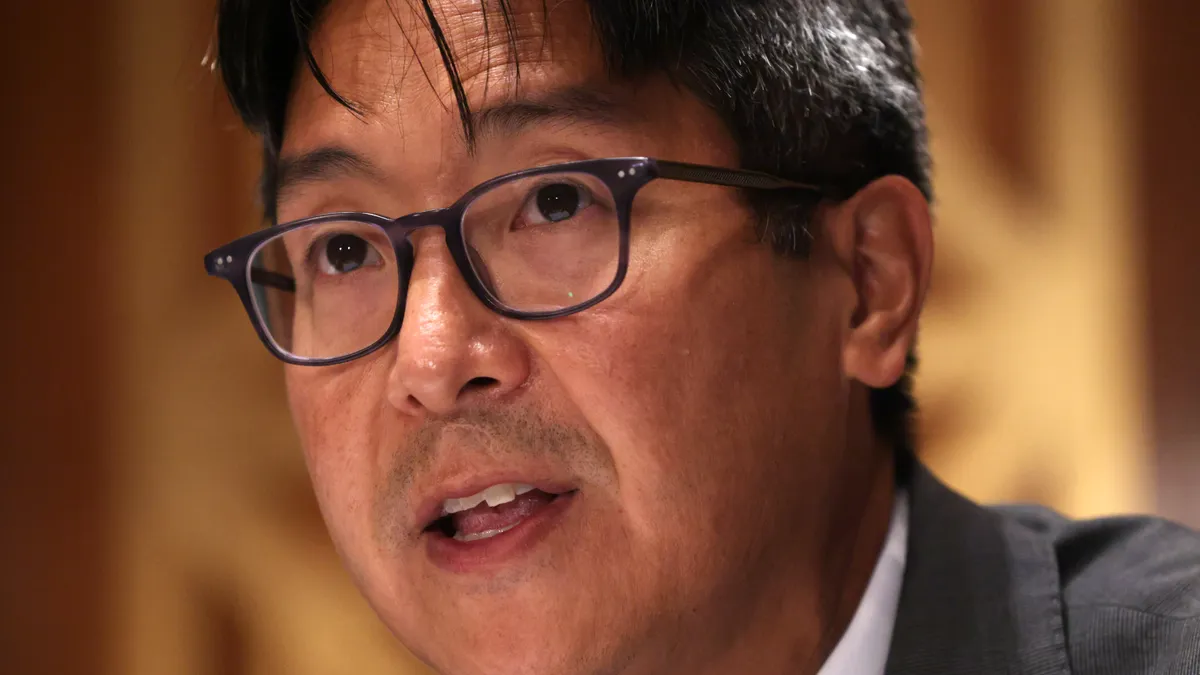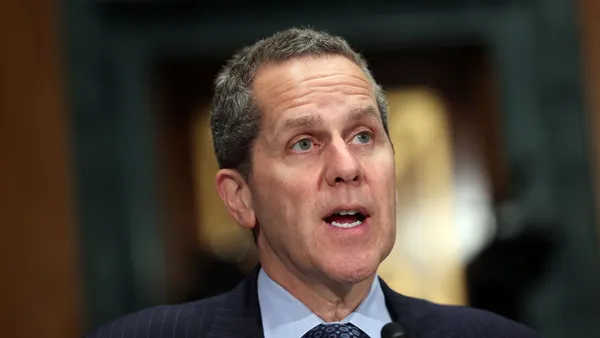Banks should be required to show that they are able to cover “acute, ultra-short-term” deposit outflows to help prevent future bank runs like the ones seen during last year’s regional bank crisis, Acting Comptroller of the Currency Michael Hsu said on Thursday.
Hsu, who floated the idea during a speech delivered at Columbia University Law School, said he wants regulators to implement a "targeted liquidity requirement" by which midsize and large banks would be required to hold sufficient liquidity to cover stress outflows over a five-day period.
“The characteristics of bank runs are changing, and banks and regulators need to adapt accordingly,” he said. “We need to develop better brakes to keep banks safe and sound and to mitigate systemic risk.”
Last year's string of bank failures has made the issue of bank liquidity a top concern for regulators and lawmakers in recent months. In the wake of the failures, bank regulators proposed new capital requirements last summer, which would force banks with $100 billion in assets to account for unrealized gains and losses on some securities and alter the way banks calculate risk-weighted assets.
Large banks are already subject to the liquidity coverage ratio, which requires them to hold high quality liquid assets sufficient to meet stressed liquidity outflows over a 30-day period.
Under Hsu’s plan, regulators would take into account the amount of cash a bank has at the Federal Reserve, the collateral it pledges for access to the discount window and the amount of uninsured deposits it holds.
Hsu also proposed giving banks credit for their discount window borrowing capacity, a move he said would help combat the stigma associated with tapping the Fed safety net.
“This would make clear that regulators expect banks in stress to utilize the discount window to help cover short term liquidity outflows when needed. This regulatory expectation could help de-stigmatize discount window usage,” he said.
The Federal Reserve’s short-term lending facility is aimed at providing liquidity for banks in times of crisis.
A Fed survey of senior bank financial officers released in August, however, found that public perception and the potential for negative treatment by bank supervisors discourages some firms from using the facility.
Hsu suggested banks should also be required to do periodic test draws of the discount window to ensure readiness in times of stress.
“It’s almost like doing a fire drill. If it’s required, when a real liquidity fire comes, then the banks can do it in real life,” he told the Wall Street Journal. “Operationally, banks would have to go borrow $1, $100 million, whatever it might be, just to ensure that the procedures, the systems, the people, everything is there and in place to access the discount window.”
The idea that banks should be required to tap the facility on a regular basis has also been floated by Sen. Mark Warner, D-VA, who put forward a similar proposal during a Senate Banking hearing last month.
Warner said he plans to introduce legislation that would require banks, on an episodic basis, to use the Fed’s discount window, a measure he said would help remove the stigma associated with tapping the central bank’s safety net.
In the wake of last year’s bank turmoil, regulators, including the Fed, Federal Deposit Insurance Corp., Office of the Comptroller of the Currency and National Credit Union Administration, have also encouraged banks to incorporate the discount window as part of their contingency funding arrangements.













